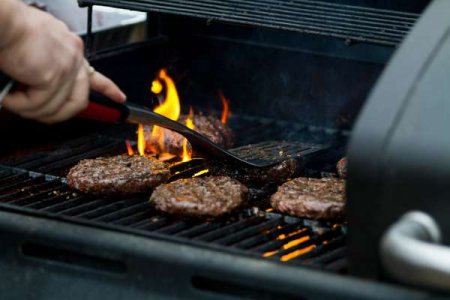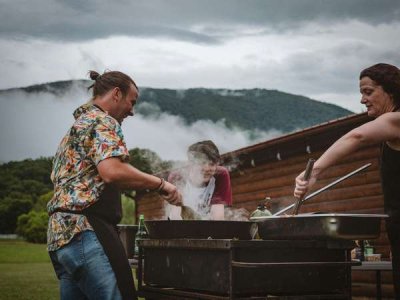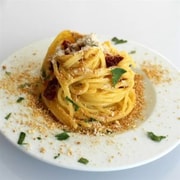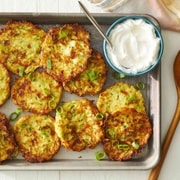Grilling this Memorial Day? Discover the simple tricks to keep your burgers safe and avoid food poisoning!
- Replies 0
Memorial Day is upon us—a time to honor our heroes, gather with loved ones, and, of course, fire up the grill for the first big cookout of the season.
Whether you’re a burger buff, a hot dog devotee, or a veggie skewer virtuoso, there’s nothing quite like the sizzle and aroma of food on the grill.
But before you don your apron and declare yourself Grill Master, let’s talk about something that can turn a festive feast into a not-so-memorable Memorial Day: food poisoning.
Here at The GrayVine, we know that nothing ruins a good gathering faster than a bout of tummy trouble.
So, let’s make sure your burgers are the talk of the party for all the right reasons—with a few simple, science-backed steps to keep your cookout safe, delicious, and worry-free.
Why Food Safety Matters—Especially in Summer
Did you know that foodborne illnesses spike during the summer months?
According to the Centers for Disease Control and Prevention (CDC), a staggering 48 million Americans get sick from foodborne illnesses each year, with 128,000 ending up in the hospital and 3,000 tragically losing their lives.

Warm weather creates a perfect breeding ground for bacteria, and outdoor gatherings often mean food sits out longer than it should.
But don’t let those numbers scare you away from the grill! With a little know-how, you can keep your family and friends safe while still enjoying all your favorite cookout classics.
Before You Even Light the Grill: Smart Prep is Key
1. Shop Smart and Store Safely
2. Thawing: Slow and Steady Wins the Race

Grill Like a Food Safety Champion
Now for the main event! Here’s how to make sure your burgers, chicken, and steaks are not just tasty, but safe to eat:
1. Know Your Temperatures
2. Avoid Cross-Contamination
Also read: New study uncovers disturbing link between a household favorite and rising cancer cases
Serving and Storing: The Final Frontier
1. Keep Hot Foods Hot and Cold Foods Cold
Source: Eat Right / Youtube.
Bonus Tips for a Safer, Happier Cookout

What’s your favorite Memorial Day grilling tradition? Do you have a secret burger recipe or a food safety tip passed down through the generations? Have you ever had a close call with undercooked food? Share your stories, questions, and tips in the comments below!
Whether you’re a burger buff, a hot dog devotee, or a veggie skewer virtuoso, there’s nothing quite like the sizzle and aroma of food on the grill.
But before you don your apron and declare yourself Grill Master, let’s talk about something that can turn a festive feast into a not-so-memorable Memorial Day: food poisoning.
Here at The GrayVine, we know that nothing ruins a good gathering faster than a bout of tummy trouble.
So, let’s make sure your burgers are the talk of the party for all the right reasons—with a few simple, science-backed steps to keep your cookout safe, delicious, and worry-free.
Why Food Safety Matters—Especially in Summer
Did you know that foodborne illnesses spike during the summer months?
According to the Centers for Disease Control and Prevention (CDC), a staggering 48 million Americans get sick from foodborne illnesses each year, with 128,000 ending up in the hospital and 3,000 tragically losing their lives.

To avoid food poisoning at BBQs and gatherings, it's important to keep cold foods cold and hot foods hot. Image source: Zac Cain / Unsplash.
Warm weather creates a perfect breeding ground for bacteria, and outdoor gatherings often mean food sits out longer than it should.
But don’t let those numbers scare you away from the grill! With a little know-how, you can keep your family and friends safe while still enjoying all your favorite cookout classics.
Before You Even Light the Grill: Smart Prep is Key
1. Shop Smart and Store Safely
- Pick up meat, poultry, and fish last at the grocery store to keep them cold.
- Keep raw meats separate from other groceries to avoid cross-contamination.
- Refrigerate raw meat as soon as you get home. If you’re not using poultry or ground meat within two days, freeze it. Other meats can last 4-5 days in the fridge.
2. Thawing: Slow and Steady Wins the Race
- The safest way to thaw meat is in the refrigerator. If you’re in a hurry, sealed packages can be thawed in cold water (change the water every 30 minutes).
- If you use the microwave to defrost, grill the food immediately—don’t let it sit out.
- Always marinate in the fridge, never on the counter.
- If you want to use marinade as a sauce, set some aside before adding raw meat. If you forget, boil the used marinade for a few minutes to kill any bacteria.

Always use separate cutting boards and utensils for raw meats and other foods to prevent cross-contamination, and wash your hands thoroughly before, during, and after handling food. Image source: Mike Kilcoyne / Unsplash.
Grill Like a Food Safety Champion
Now for the main event! Here’s how to make sure your burgers, chicken, and steaks are not just tasty, but safe to eat:
1. Know Your Temperatures
- Poultry (chicken, turkey): 165°F (use a food thermometer in the thickest part)
- Ground meats (beef, pork, veal, lamb): 160°F
- Whole cuts (steaks, chops, roasts): 145°F for medium rare (let rest 3 minutes), 160°F for medium
- Fish: 145°F or until flesh is opaque and flakes easily
2. Avoid Cross-Contamination
- Use separate cutting boards and plates for raw and cooked foods.
- Never place cooked meat back on the same plate that held it raw.
- Don’t rinse raw meat or poultry—this can spread bacteria around your kitchen.
- Wash hands with soap and water for at least 20 seconds before, during, and after handling food.
- Clean all surfaces, utensils, and platters that have touched raw meat with hot, soapy water.
Also read: New study uncovers disturbing link between a household favorite and rising cancer cases
Serving and Storing: The Final Frontier
1. Keep Hot Foods Hot and Cold Foods Cold
- Hot foods should stay at or above 140°F. Use insulated containers or keep them on the grill’s warming rack.
- Cold foods (like salads and desserts) should be kept on ice or in a cooler until serving.
- Don’t let food sit out for more than two hours. If it’s over 90°F, that window shrinks to just one hour.
- When in doubt, throw it out! No one wants a side of salmonella with their potato salad.
- Refrigerate leftovers promptly in small, shallow containers so they cool quickly.
- Cut large items (like roasts or hams) into smaller pieces before refrigerating.
- Label leftovers with the date and aim to eat them within 3-4 days.
Source: Eat Right / Youtube.
Bonus Tips for a Safer, Happier Cookout
- Grill Placement: Set up your grill away from foot traffic, pets, and anything flammable.
- Propane and Charcoal Safety: Check for leaks, and never add lighter fluid to an already-lit fire.
- Hydrate: Keep plenty of water on hand for guests (and yourself), especially if it’s a scorcher.
Key Takeaways
- To avoid food poisoning at BBQs and gatherings, it's important to keep cold foods cold and hot foods hot—this includes refrigerating raw meat as soon as you get home and not leaving any food out for more than two hours (or just one hour if it's above 32°C outside).
- Always use separate cutting boards and utensils for raw meats and other foods to prevent cross-contamination, and wash your hands thoroughly before, during, and after handling food.
- Thaw and marinate meat only in the fridge, not on the bench, and dispose of marinades that have touched raw meat unless they've been boiled—this helps stop the spread of harmful bacteria.
- Use a food thermometer to ensure meat is cooked to safe temperatures: Poultry should reach at least 74°C, burgers and pork 71°C, whole cuts of beef and lamb 63°C (with a 3-minute rest), and fish 63°C or until it flakes apart.
What’s your favorite Memorial Day grilling tradition? Do you have a secret burger recipe or a food safety tip passed down through the generations? Have you ever had a close call with undercooked food? Share your stories, questions, and tips in the comments below!






